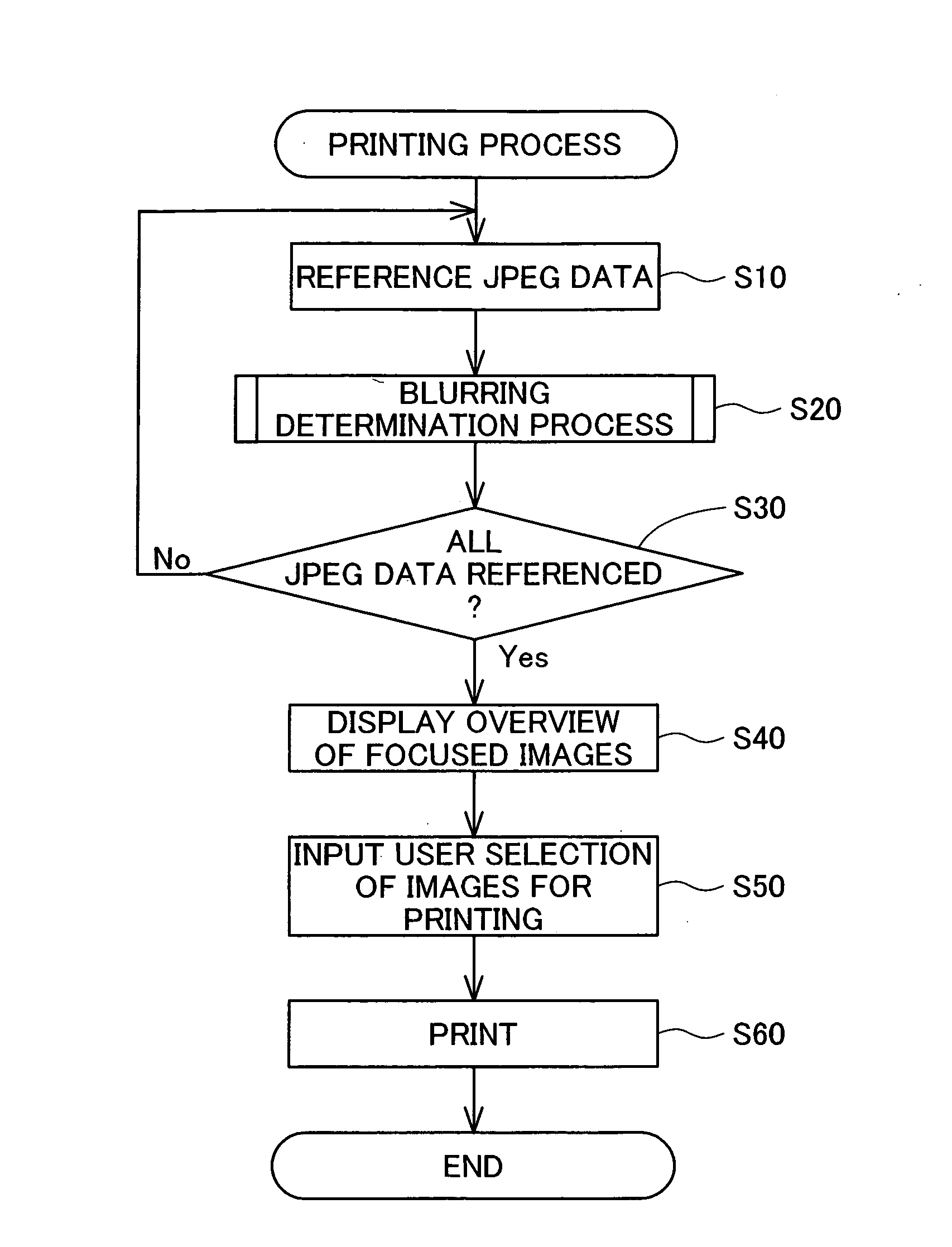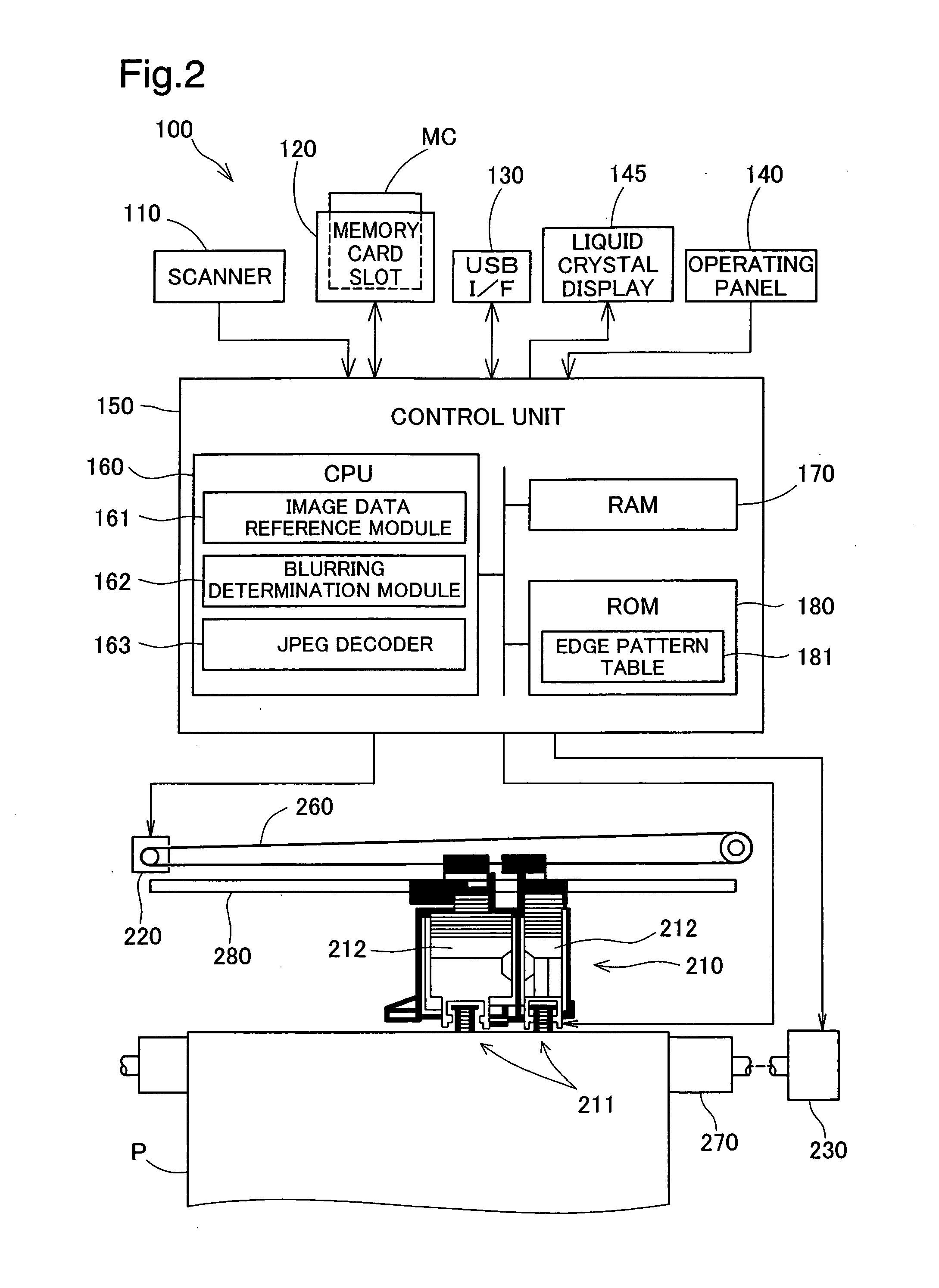Blurring determination device, blurring determination method and printing apparatus
a technology of blurring determination and blurring detection method, applied in image analysis, instruments, computing, etc., can solve the problems of unintentional blurring or object motion of photographs, image is relatively often blurred, and is extremely cumbersome to select normal images, so as to reduce processing burden or memory volume. the effect of us
- Summary
- Abstract
- Description
- Claims
- Application Information
AI Technical Summary
Benefits of technology
Problems solved by technology
Method used
Image
Examples
1st embodiment
1. 1st Embodiment
[0045]A. Printer Structure
[0046]FIG. 1 illustrates the appearance of a printer 100 as an embodiment of the invention. The printer 100 is a multifunction printer. The printer 100 is equipped with a scanner 110 that optically scans images, a memory card slot 120 for inserting a memory card MC on which image data has been recorded, and a USB interface 130 for connecting devices such as digital cameras. The printer 100 is able to print images scanned by the scanner 110, images read from the memory card MC, and images read from a digital camera via the USB interface 130 on printing paper P. The printer 100 can also print images input from a personal computer (not shown) connected by a printer cable or USB cable.
[0047]The printer 100 is equipped with an operating panel 140 for a variety of printing-related operations. A liquid crystal display 145 is provided in the center of the operating panel 140. Displayed on the liquid crystal display 145 are images read from the memo...
3rd embodiment
3. 3rd Embodiment
[0128]FIG. 21 illustrates the appearance of a kiosk terminal as a third embodiment of the invention. The kiosk terminal 400 is a device located on streets or in various shops, and is equipped with a ticket-issuing function, ATM function, or various guided service functions.
[0129]The kiosk terminal 400 in this embodiment is equipped with a monitor 410, memory card reader 420, and printer 430. It is also internally equipped with a CPU, RAM, and ROM. The CPU executes a control program stored in ROM by loading the program in RAM, so as to carry out the above ticket-issuing function, ATM function, or various guided service functions. The CPU also runs the control program to carry out the same processes as the various processes described in the first embodiment (printing process and blurring determination process). The kiosk terminal 400 can thus read image data from memory cards inserted into the memory card reader 420 and automatically extract focused images to display ...
PUM
 Login to View More
Login to View More Abstract
Description
Claims
Application Information
 Login to View More
Login to View More - R&D
- Intellectual Property
- Life Sciences
- Materials
- Tech Scout
- Unparalleled Data Quality
- Higher Quality Content
- 60% Fewer Hallucinations
Browse by: Latest US Patents, China's latest patents, Technical Efficacy Thesaurus, Application Domain, Technology Topic, Popular Technical Reports.
© 2025 PatSnap. All rights reserved.Legal|Privacy policy|Modern Slavery Act Transparency Statement|Sitemap|About US| Contact US: help@patsnap.com



